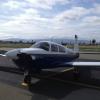Battery capacity testing. Review of DTL150, a $35 battery capacity tester.
-
Members Online
- Tx_Aggie
- TBILL
- ElkoRandy20J
- DonMuncy
- Marc_B
- TaildraggerPilot
- UteM20F
- dzeleski
- FredG
- LANCECASPER
- Buckeyechuck
- Jeph357
- Robert C.
- Pinecone
- Tcraft938
- kaba
- GeeBee
- EricJ
- ericrynehess
- AJ88V
- 201Steve
- Noreaster
- Jetpilot86
- Jason 1996 MSE
- gabez
- Mark89114
- TangoTango
- BobM20K
- camshaft
- George Braly
- korbike
- NickG
- ohdub
- philiplane
- MikeOH
- Paul Thomas
- BrentS
- jrwilson
- tankles
- Utah20Gflyer
- Bunti
- BeachLifeMoon
- Planegary
- mluvara
- 65MooneyPilot
- Jft1025
- redbaron1982


Recommended Posts
Join the conversation
You can post now and register later. If you have an account, sign in now to post with your account.